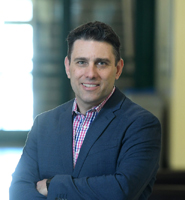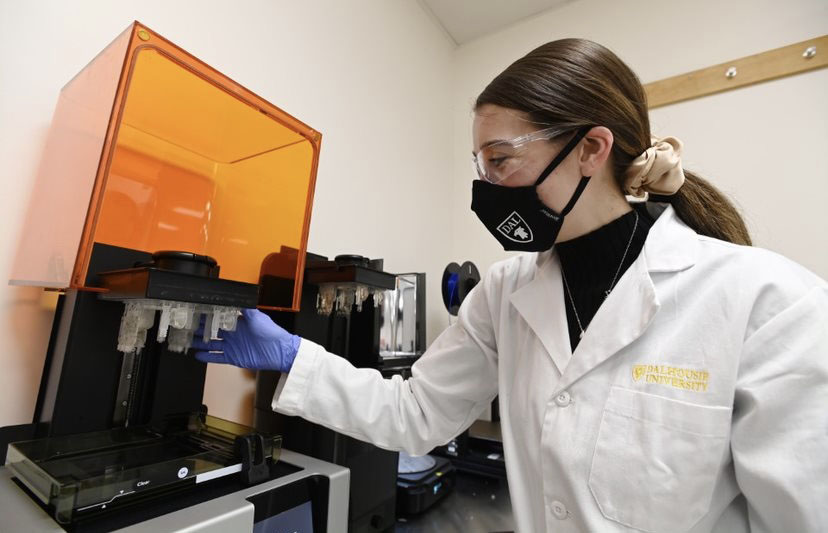During the early days of the COVID-19 pandemic, leaders around the globe were searching for solutions to help get a handle on the crisis. When would the next wave hit? When would the next surge wash over their community?
Testing on an individual basis provided answers, but often a COVID wave was already a flood by the time epidemiologists could fully absorb and analyse the results. There was demand for more immediate feedback on the levels of infection streaming into communities. ╠¤
Innovators around the globe were searching for solutions тАФ including a small business in New Brunswick with a solution focused on testing water downstream in the pipes leading from our homes and business.
Outsourcing a brilliant idea
тАЬAs the pandemic went on, we determined that there is something interesting here with the wastewater,тАЭ said Jordan Schmidt, director of product applications at Fredericton, N.B.-based . тАЬHow might we develop a wastewater test kit that is accessible for a larger audience. Our research and development team had an idea, but they didnтАЩt have the time because they were focused on higher priority clinical testing.тАЭ
here with the wastewater,тАЭ said Jordan Schmidt, director of product applications at Fredericton, N.B.-based . тАЬHow might we develop a wastewater test kit that is accessible for a larger audience. Our research and development team had an idea, but they didnтАЩt have the time because they were focused on higher priority clinical testing.тАЭ
LuminUltra was focused on fulfilling a contract with the Government of Canada to produce tests for individuals, so it did what it often does when it wants to put new ideas to work. It turned to their longstanding research partners in H┬■╗нтАЩs .
тАЬWe had the idea, but we didnтАЩt have the people to follow through. And Dal had a lot of folks that were interested in working in the lab and doing something to protect public health, so it was a natural win-win,тАЭ says Dr. Schmidt (pictured above right).
The result was a new patent-pending innovation for wastewater testing that is easy-to-use and provides results in hours. It was a significant improvement over previous testing options that could take weeks to provide results and required specialized equipment and lab expertise. The new process opened wastewater testing to a huge new market.
A climate for water innovation
ItтАЩs wins like this that inspired NSERC to approve a new $7-millon Alliance Grant that will enable H┬■╗н researchers to work with public and private sector organizations focused on water testing and treatment. The aim is to better understand the coming impacts of climate change. Led by Graham Gagnon with co-investigators Amina Stoddart, Mita Dasog and Alison Scott, the team is set to study how rising temperatures could affect our water systems, from the water we drink to the water we pump out into the world.
 тАЬWith climate change will come a change in the temperature of surface water that we use as sources of drinking water,тАЭ says Dr. Gagnon (pictured left). тАЬBut this also results in changes in water chemistry and water microbiology. In other words, if the water is warmer, different species can grow, they can grow longer in some cases or shorter in others.тАЭ
тАЬWith climate change will come a change in the temperature of surface water that we use as sources of drinking water,тАЭ says Dr. Gagnon (pictured left). тАЬBut this also results in changes in water chemistry and water microbiology. In other words, if the water is warmer, different species can grow, they can grow longer in some cases or shorter in others.тАЭ
And some of these species, like blue-green algae, will not be fit for human consumption, while others may not be safe for the ecosystems they are ultimately released to.
Dr. Gagnon says acquiring an understanding of changes to come is valuable to industrial partners like , one of eight organizations, including LuminUltra, making financial or in-kind contributions to gain access to H┬■╗н research. He says being able to envisage what our water supply is going to look like in years to come will allow Halifax Water and other organizations to make strategic investments to keep customers safe and efficiency high.
тАЬWhen an organization designs a treatment plant, they typically design for a 25- to 50-year lifecycle. If you donтАЩt know exactly what youтАЩre going to be treating it makes it very difficult. You have to ask, тАШIf the temperature changes by one and a half degrees, does that mean IтАЩm treating something different? Do I have to put other provisions in my treatment plant as a consequence?тАЩ"
Putting ideas into action
For LuminUltra, the research is informing rapidly paced business decisions and product development that is having a substantial return on investment. The COVID-19 wastewater test kit they developed in collaboration with Dal has become a тАЬbeachheadтАЭ that helped launch the company in new directions, land major new clients and expand their operations around the world.
тАЬIt has grown from there and along the way we have commercialized different items that have been well accepted,тАЭ says Dr. Schmidt. тАЬIt has allowed us to be an innovative player in the space. We were the first to the market with a lot of these solutions and people have followed our lead. ItтАЩs become a busier market, but within that we have been able to do a lot of interesting projects.тАЭ
The company has inked contracts with the Centers for Disease Control and Prevention in the United States to monitor wastewater at corrections facilities and for 500 municipalities. They are doing wastewater epidemiology in remote camps in Northern Ontario and cruise ships, and have customers in the UK using their products for mobile laboratories in the back of Sprinter vans.
Related reading:╠¤Dal researchers help develop wastewater test that could act as an early warning sign for COVIDтАС19 outbreaks
Drawing on students
Dr. Schmidt, a H┬■╗н PhD graduate who studied with Dr. Gagnon, points to the universityтАЩs research team, including its graduate students, as an engine of novel ideas that keep LuminUltra in a constant state of innovation development.
тАЬWeтАЩre completely on board with harnessing the innovative spirit that a lot of the graduate students have, and their drive to bring their ideas to the world,тАЭ he says. тАЬEveryone has a desire to make a difference and I think thatтАЩs where we have common core values between the research group at H┬■╗н and our eight research partners.тАЭ
PhD student Emalie Hayes says the opportunity to develop wastewater testing solutions for COVID-19 that potentially saved lives is hugely satisfying.
тАЬIтАЩve learned so much from working and collaborating with LuminUltra and Halifax Water. It gives us the chance to expand our ideas, make them into commercial products, take our research to the field, and just do more,тАЭ she says.
тАЬTo see something that youтАЩve been working on with your fellow researchers help people and to be able to expand this new field of research and have an impact тАУ it really is exciting.тАЭ


